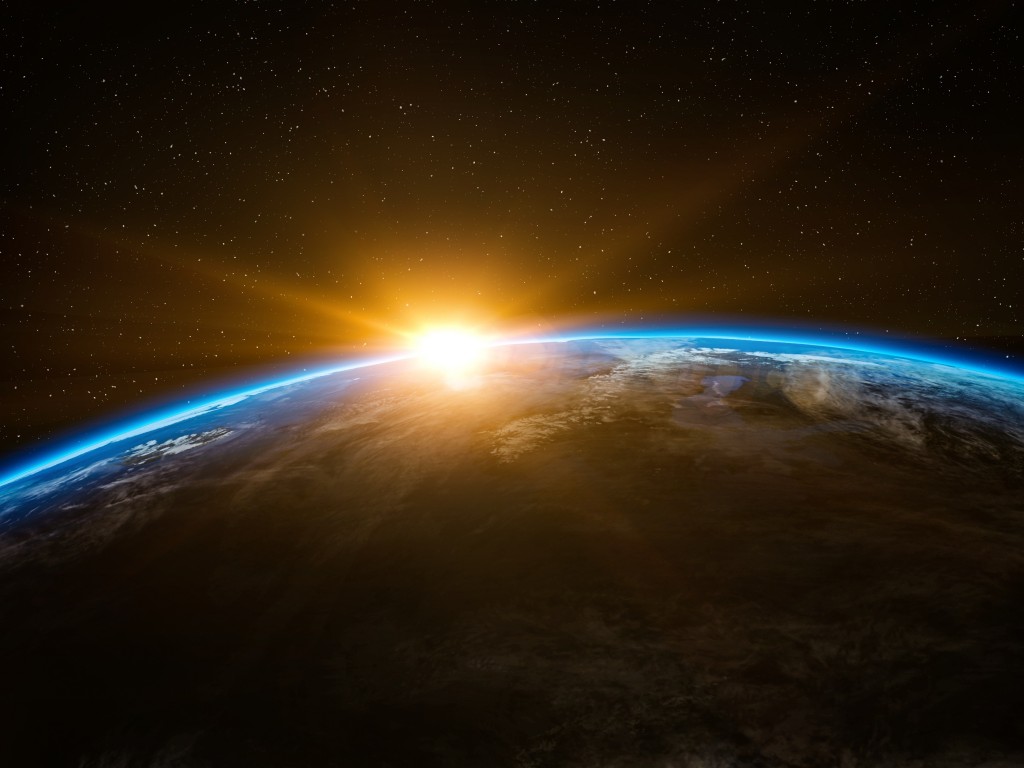The Age of the Earth: A historical development
People have always known that the Earth must be incredibly old. But how old exactly had been a debate lasting centuries. Over the course of history, multiple attempts have been made to correctly estimate the exact age of our planet. Today the field of geochronology provides us with a powerful tool to date the age of rocks, but earlier in history different approaches have been made.

wallpapersite.com
The first estimate on the age of the Earth was made by the irish bishop James Ussher in 1654. Using biblical resources he calculated the date of the Creation to have been nightfall on 22 October 4004 BC.
In the 18th century geologists, like James Hutton, the ‘father of modern geology', realized that the 1500 year old Hadrians Wall in northern England showed next to no signs of change. This would mean the Earth’s mountains and valleys needed to be much older than just this mere wall and the age of the Earth cannot be only a few thousand years.
Charles Lyell estimated, based on the evolution speed of molluscs since the Pleistocene, the age of tertiary molluscs and came to the conclusion that the Cenozoic age started 80 million years ago. Which is 25% off but still incredibly remarkable.
Other scientist, between 1860 and 1910, measured sedimentation rates and estimates on the thickness of sedimentary rocks and calculated the time frame fro the age of the Earth to 1.6 billion years. Unfortunately they did account for erosion the fact that ancient sediments have undergone metamorphism.
At the end of the 19th century Lord Kelvin published his view that the Earth needs to be 20-40 million years old, because the Earth was molten at the beginning and this would be the time it needs to cool. At this point he was not aware of the effects of radioactivity, during which internal heat production is taking place, which would increase the time it would take the Earth to cool down significantly.
Around 1900 John Joly calculated an age of 90-100 Ma by analyzing the amount of salt a river transports into the sea and how much salt the sea currently contains. However he did not account for salt being removed from the sea and preserved in rocks when ancient seas evaporated.
After Henri Becquerel discovered radioactivity in 1896, Rutherford and Boltwood calculated the age of the Earth to be around 500 million years utilizing the U-He-method. Using the U-Pb-method Boldwood later calculated a new age of 1.68 million years.
In 1956 the American Clair Patterson calculated, using lead isotopes, the Age of the Earth to 4.55 billion years. He realized, that the average terrestrial lead should lie on the lead-isotope trend of meteorites, if the meteorites and the Earth are of the same age. This age only varies by 0.1 % from the currently used age.
It has been an incredible journey.
Sources
- Burchfield, J.D. (1998). The age of the Earth and the invention of geological time. In: Blundell, D.J. and Sco'rr, A.C. (Eds) Lyell: the Past is the Key to the Present. Geological Society. London, Special Publications, 143, 137-143
- http://www.rsc.org/Education/Teachers/Resources/jesei/earthage/students.htm
- https://en.wikipedia.org/wiki/James_Ussher
- https://en.wikipedia.org/wiki/James_Hutton
- https://en.wikipedia.org/wiki/Charles_Lyell
- https://en.wikipedia.org/wiki/John_Joly
- https://en.wikipedia.org/wiki/Henri_Becquerel
- https://en.wikipedia.org/wiki/Ernest_Rutherford
- https://en.wikipedia.org/wiki/Bertram_Boltwood
- https://en.wikipedia.org/wiki/Clair_Cameron_Patterson
You received a 80.0% upvote since you are a member of geopolis and wrote in the category of "geopolis".
To read more about us and what we do, click here.
https://steemit.com/geopolis/@geopolis/geopolis-the-community-for-global-sciences-update-4